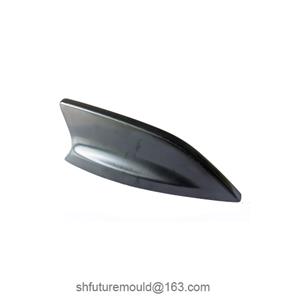Common Issues and Solutions for Dimensional Variations in Injection Molded Parts
Dimensional variations in molded parts are a common problem during the injection molding process. These variations can significantly affect product quality and impact a product's fit, function, and appearance.
1. Causes of Dimensional Variations:
①.Mold-Related Factors:
Mold Manufacturing Precision: The dimensional accuracy of the mold directly influences the dimensions of the molded part. Deviations in the machining of the mold cavity and core, such as tool wear, programming errors, or insufficient machine precision during CNC machining, can lead to mold dimensions that do not meet design specifications.
Mold Wear: Over extended periods of injection molding, the mold cavity and core undergo wear due to the erosion of the molten plastic and friction during mold opening. This wear is particularly pronounced with plastics containing fillers like glass fibers. As wear progresses, the dimensions of the molded part gradually change.
Thermal Expansion of the Mold: During the injection molding process, the mold temperature fluctuates. Different mold materials have varying coefficients of thermal expansion. When the mold temperature increases, the cavity and core expand. If the mold cooling system is not designed effectively to control the temperature of various mold sections, dimensional variations in the molded part can occur due to thermal expansion.
②.Injection Molding Process Factors:
Injection Pressure and Holding Pressure: Excessive injection pressure can cause the molten plastic to be excessively compacted within the cavity, leading to oversized molded parts.
Injection Speed: Injection speed also affects the dimensions of the molded part. Excessive injection speed can create turbulence within the molten plastic in the cavity, hindering the escape of gases and resulting in defects such as voids in the molded part.
Cooling Time: Cooling time is a critical factor affecting the dimensions of the molded part. If the cooling time is insufficient, the molded part may not fully solidify before being ejected, causing it to shrink due to thermal contraction. Additionally, inadequate cooling time can lead to deformation of the molded part after ejection.
③.Plastic Material Factors:
Plastic Shrinkage: Different types of plastics have varying shrinkage rates. Shrinkage refers to the proportional decrease in volume as the plastic cools from a molten to a solid state. Furthermore, the shrinkage rate of plastic can be influenced by additives and fillers.
Batch-to-Batch Variations: Even for the same type of plastic, different batches may exhibit variations in properties due to differences in raw material sources and manufacturing processes.
④.Equipment Factors:
Injection Molding Machine Precision: The precision of parameters such as the screw diameter and injection stroke of the injection molding machine affects the injection volume of the molten plastic. Deviations in the screw diameter can lead to inaccuracies in the injected plastic volume, thereby impacting the dimensions of the molded part.
Equipment Stability: During operation, if the injection molding machine's hydraulic system, control system, or other components are unstable, it can introduce variations in the molding process and affect part dimensions.
2. Solutions:
Improve Mold Manufacturing Precision: Produce molds using high-precision machining equipment and advanced manufacturing processes. After manufacturing, conduct rigorous inspections of the mold cavity and core to ensure that the dimensions meet design specifications.
Optimize Mold Design: During mold design, consider the impact of the mold's structure on the dimensions of the molded part. Design the mold cooling system effectively to ensure uniform temperature distribution in the mold, reducing the impact of thermal expansion on part dimensions. For areas susceptible to wear, use wear-resistant materials or apply surface hardening treatments.
Regular Mold Maintenance: Establish a mold maintenance schedule for regular inspection, cleaning, and repair. Promptly replace worn components.
Optimize Process Parameters: Through trial molding and process optimization experiments, determine the optimal injection pressure, holding pressure, injection speed, and cooling time.
Control Molding Environment Temperature and Humidity: The temperature and humidity of the molding environment can also influence the dimensions of the molded part. Generally, higher temperatures improve the fluidity of the plastic but can also increase shrinkage.
Accurate Material Selection and Shrinkage Determination: During product design and injection molding process planning, carefully select the plastic material and determine the appropriate shrinkage rate based on the material's properties and actual production conditions. Refer to technical data provided by the plastic material supplier and consider the impact of additives or fillers on the shrinkage rate.
Regular Calibration of the Injection Molding Machine: Regularly calibrate critical parameters such as the screw diameter and injection stroke of the injection molding machine to ensure accurate injection volumes. Additionally, maintain and service the machine's hydraulic system, control system, and other components to ensure stability.




